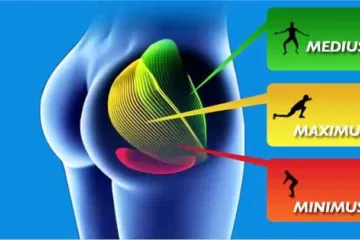Disease X may sound scary, but it’s not a real disease yet. However, experts are talking about it online as they consider future health risks beyond COVID-19.
What’s happening
“Disease X” is a term coined years ago and was added by the World Health Organization to its list of important diseases in 2017, alongside well-known diseases like Zika and Ebola. It’s used to represent potential new threats, with the WHO stating that “Disease X signifies the understanding that a severe global epidemic could be triggered by a pathogen that is currently unknown to cause human illness.” COVID-19, caused by the novel SARS-CoV-2 virus, was a real-life example of a Disease X when it first appeared at the end of 2019.
Should I be Worry?
It is certainly a cause for concern, and the question isn’t whether we will face another pandemic, but rather when, warns Pablo Penaloza-MacMaster, an assistant professor of microbiology-immunology at Northwestern University Feinberg School of Medicine. He emphasizes the danger posed by yet-to-be-discovered pathogens and forthcoming pandemics.
The gap between the COVID-19 pandemic and the 1918 Spanish Flu pandemic was over 100 years, but experts suggest that future pandemics may not be as far apart, and there are several reasons for this.
Several factors contribute to the increased risk of future pandemics:
Population Growth
The growing and denser global population provides pathogens with a larger pool of susceptible hosts, increasing the likelihood of transmission from person to person.
Increased Travel
Modern transportation enables people to travel longer distances more easily, facilitating the rapid spread of diseases across regions and countries.
Global Warming
Climate change exacerbates the spread and severity of infectious diseases and may even result in the resurgence of ancient viruses as thawing permafrost releases long-dormant pathogens.
Deforestation and Wildlife Encroachment
The destruction of natural habitats and encroachment on wildlife territories blur the boundaries between humans and animals. This offers viruses and other pathogens that previously only infected animals more opportunities to jump to human hosts.
Dr. Wafaa El-Sadr, an epidemiology professor at Columbia’s Mailman School of Public Health and leader of the New York City Pandemic Response Institute, underscores the vital lesson learned from COVID-19: the severe consequences of being unprepared. She emphasizes the importance of proactively anticipating and preparing for the possibility of another pandemic in the future.
What can we take steps about it?
To better prepare for a Disease X or future pandemics, there are several crucial steps we can take:
Invest in Science and Research
Prioritize increased investment in science and research well in advance of the next pandemic. Dr. El-Sadr underscores that the ability to develop vaccines rapidly for SARS-CoV-2 was made possible because of years of ongoing research. It’s essential to initiate and support scientific work long before a specific threat emerges. Dr. Penaloza highlights the disparity between military spending and funding for research by organizations like the National Institutes of Health, emphasizing the need to allocate more resources toward improving our defenses against infectious diseases.
By dedicating more resources to scientific research and preparedness, we can enhance our readiness to combat future health crises effectively.
Enhancing surveillance and sequencing of viruses is another crucial step in preparing for Disease X and future pandemics. Here’s how we can do it:
Improved Disease Surveillance
Establish more effective disease surveillance systems to monitor and track diseases. This includes collecting comprehensive data on disease occurrences and promptly sharing this information across borders and institutions.
Expanded Wildlife Surveillance
Increase efforts to conduct surveillance and sequence viruses in animal reservoirs. This involves sending researchers into the field to identify new viruses, gather their genetic sequences, and proactively develop vaccines based on these known sequences.
Preemptive Vaccine Development
Develop vaccines in advance based on the genetic information obtained from virus sequencing in animal reservoirs. By having these vaccines ready, we can respond more quickly and effectively when a new pandemic emerges, deploying a vaccine that closely matches or corresponds to the genetic sequence of the novel pathogen.
These proactive measures in surveillance and vaccine development can significantly improve our ability to combat emerging infectious diseases.
Do more surveillance and sequencing of viruses
El-Sadr suggests putting in place systems to do better in terms of surveillance of disease, collecting data and sharing data. “One possibility could be doing more surveillance and sequencing more viruses in animal reservoirs — going out to the field and identifying new viruses, getting the sequences and then preemptively making vaccines based on those known sequences,” Penaloza says. “And then when there’s a new pandemic, you could think about potentially deploying the most matched vaccine, the one that matches or corresponds better to the sequence of the future pandemic.”
Final Words
The key takeaway is that while we were relatively fortunate with COVID-19 due to its genetic similarity to other known coronaviruses, there’s no assurance that Disease X will be as familiar. We benefited from prior knowledge and research, enabling the development of vaccines. However, challenges such as anti-science movements and growing vaccine hesitancy must be addressed as we prepare for future diseases.
Despite the lessons learned from the COVID-19 pandemic, there’s still work to be done in pandemic preparedness. Complacency and a tendency to forget or downplay the possibility of future pandemics can hinder our readiness. We must remain vigilant and continue to invest in science, surveillance, education, and equitable healthcare systems to effectively confront future public health threats.



